#art from tehran
Explore tagged Tumblr posts
Text

Painting by Farzad Majidi
0 notes
Text
Queer Fiction Free-for-All Book Bracket Tournament: Round 3


Book summaries and submitted endorsements below:
Martyr! by Kaveh Akbar
Endorsement from submitter: "(spoiler for the book but) the main character is a bisexual man who stops being suicidal when he accepts that he loves his (gay) roommate, and said roommate loves him too! His mom was also bisexual and the book talks about the life changing relationships she had with two women"
Kaveh Akbar’s Martyr! is a paean to how we spend our lives seeking meaning—in faith, art, ourselves, others—in which a newly sober, orphaned son of Iranian immigrants, guided by the voices of artists, poets, and kings, embarks on a search that leads him to a terminally ill painter living out her final days in the Brooklyn Museum.
Cyrus Shams is a young man grappling with an inheritance of violence and loss: his mother’s plane was shot down over the skies of Tehran in a senseless accident; and his father’s life in America was circumscribed by his work killing chickens at a factory farm in the Midwest. Cyrus is a drunk, an addict, and a poet, whose obsession with martyrs leads him to examine the mysteries of his past—toward an uncle who rode through Iranian battlefields dressed as the Angel of death to inspire and comfort the dying, and toward his mother, through a painting discovered in a Brooklyn art gallery that suggests she may not have been who or what she seemed.
Electrifying, funny, wholly original, and profound, Martyr! heralds the arrival of a blazing and essential new voice in contemporary fiction.
Literary fiction, contemporary, experimental, existentialist novel, lyrical, adult
Bury Your Gays by Chuck Tingle
Misha is a jaded scriptwriter who has been working in Hollywood for years, and has just been nominated for his first Oscar. But when he's pressured by his producers to kill off a gay character in the upcoming season finale―"for the algorithm"―Misha discovers that it's not that simple.
As he is haunted by his past, and past mistakes, Misha must risk everything to find a way to do what's right―before it's too late.
Horror, thriller, social horror, metanarrative, speculative fiction, adult
#polls#queer fiction free for all#martyr#martyr!#kaveh akbar#bury your gays#chuck tingle#books#fiction#booklr#lgbtqia#tumblr polls#bookblr#book#lgbt books#queer books#poll#fiction books#book polls#queer lit#queer literature
21 notes
·
View notes
Text









Mohsen Ahmadvand, born in Tehran, Iran, in 1982, earned his BA in Painting from the Faculty of Fine Arts at Tehran University. Preferring drawing for its efficiency and immediacy, Ahmadvand’s work often interweaves satirical themes with contemporary events and historical figures.
His style, influenced by Persian miniature painting, is characterized by intricate compositions and a unique blend of graphical skill, surrealist elements, mythological references, and a nuanced comedic touch.
20 notes
·
View notes
Text
Alexander Durie 23 May, 2024
The Cannes Film Festival this year showcased screenings from the Middle East and North Africa that captured significant attention.
The New Arab has curated a list of the top seven films premiered there, and we highly recommend giving them a watch.
The Seed of the Sacred Fig (2024)
Director Mohammad Rasoulof – Iran, France, Germany
In the bustling streets of Tehran, the life of Judge Iman takes a drastic turn when he discovers his gun missing, leading him to suspect his own family, including his wife and daughters. The film explores the intricate dynamics of familial relationships, as suspicion and distrust put their bonds to the ultimate test.
Despite facing an eight-year prison sentence in Iran, Director Mohammad Rasoulof's determination to present this story at Cannes highlights the enduring power of artistic expression in challenging times.
Norah (2024)
Director Tawfik Alzaidi – Saudi Arabia
Transporting audiences back to the conservative landscape of 1990s Saudi Arabia, Norah introduces us to Nader, a newly arrived teacher in a remote village, and Norah, a spirited young woman yearning for freedom. Their secret affair blossoms amidst the shadows of societal restrictions and impending danger, fueled by their shared passion for art and beauty.
Against the backdrop of a repressive society, the film serves as a reminder of the power of love and the human spirit's pursuit of liberation.
youtube
To a Land Unknown (2024)
Director Mahdi Fleifel – Palestine, UK, France, Germany, Greece, Netherlands, Qatar, Saudi Arabia
To a Land Unknown tells the story of Chatila and Reda, two Palestinian cousins in Athens, Greece, aiming for a better life in Germany. They face tough challenges as refugees, pushing themselves to their limits. Their journey highlights the struggles of seeking refuge and finding hope in difficult times.
youtube
Across the Sea (2024)
Director Saïd Hamich Benlarbi – Morocco, France, Belgium, Qatar
Across the Sea follows Nour, a young immigrant who comes to Marseille, France, for a better life. He faces tough challenges surviving on the outskirts of society, getting involved in small crimes with an uncertain future. But meeting Serge, a charismatic but unpredictable cop, and his wife Noémie, gives Nour hope.
The story spans from 1990 to 2000, showing Nour's search for love, identity, and belonging in a world that's changing fast.
youtube
East of Noon (2024)
Director Hala Elkoussy – Egypt, Netherlands, Qatar
East of Noon welcomes viewers into a fantasy world rooted in Egyptian folklore. It follows young Abdou, a musical prodigy who defies tradition with his music. As Abdou's melodies resonate across the timeless landscape, he confronts the norms, embarking on a bold journey of self-discovery.
Director Hala Elkoussy's tale celebrates Egypt's cinematic heritage, with enchanting characters and captivating storytelling that transport audiences to a realm of limitless imagination.
The Brink of Dreams (2024)
Director Nada Riyadh & Ayman El Amir – Egypt, France, Denmark, Qatar, Saudi Arabia
In a remote village in Upper Egypt, a group of young girls breaks societal norms by forming a street theatre group. They dream of a life beyond their traditional upbringing. Through daring performances, they challenge the expectations of their Coptic families and local communities. Daughters of the Nile, filmed over four years, shows their journey from rebellious teens to empowered women.
This film is a powerful story of resilience and strength, capturing their universal longing for self-discovery and freedom.
youtube
Everybody Loves Touda (2024)
Director Nabil Ayouch – Morocco, France, Belgium, Denmark, Netherlands, Norway
In the charming villages of Morocco, Touda dreams of a life beyond what society expects. She wants to become a Sheikha, a traditional Moroccan performer. Despite facing criticism from her community, Touda finds comfort in her music, singing about resistance, love, and freedom. Every night, she performs in local bars, her voice filling the streets as she imagines a better future for herself and her son.
Driven by a desire to break free from tradition, Touda sets her sights on the bright lights of Casablanca, determined to make her own way in a world full of opportunities.
youtube
#swana#mena#arab#iran#north africa#south west asia#egypt#morocco#saudi arabia#qatar#palestine#Youtube
31 notes
·
View notes
Text


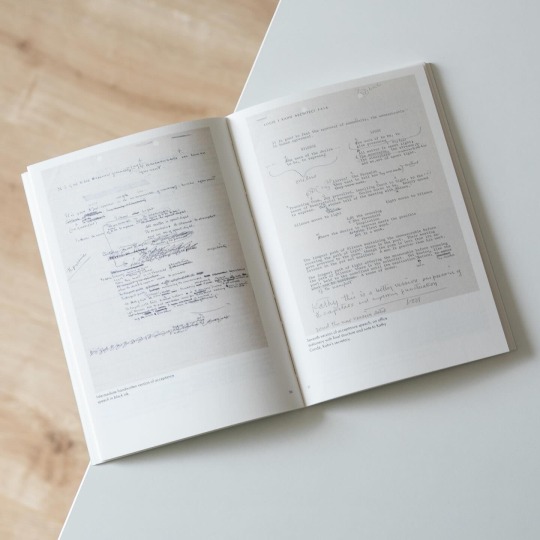
Some 50 years ago, on March 17, 1974, Louis Kahn passed away at Penn Station at a time when his office was buzzing with significant projects: the Franklin Delano Roosevelt Memorial, the Yale Center for British Art and the urban development of Abbasabad, a new district in Tehran, Iran, to be developed in collaboration with Kenzo Tange. Of these projects the Roosevelt Memorial was of the greatest significance for Kahn because he personally benefited from the president’s „New Deal“ policy of the 1930s and was thus highly motivated to design the memorial. Hence it is no wonder that he worked quite fervently on it as shows the notebook he filled with numerous drawings and variants of the project until his untimely death.
This last notebook of Louis Kahn, which he began in late February/early March 1973, has recently been published by Lars Muller Publishers as a facsimile, edited by the architect’s daughter Sue Ann Kahn and supplemented with a separate volume containing an essay by Michael J. Lewis.
Kahn was an accomplished draftsman who drew passionately and developed projects in his notebook first: in sometimes thumbnail-sized drawings the notebook documents the progress of the projects but also contains notes and addresses Kahn wrote down during meetings and events. In contrast to these quickly taken notes several of the drawings are carefully colored.
Beyond drawings the notebook also contains the outlines of two public lectures he gave in October 1973, one being the Tiffany Lecture at the University of Pennsylvania and the other his principal address delivered during the dedication of the new architecture building of the University of Maryland that coincided with the award of an honorary degree to Kahn himself. For each he merely laid down some key aspects he wished to address instead of formulating a complete text: in both Kahn dealt with the relationship between form and design but for the second occasion he outlined his speech in a visual manner to have it projected during his speech.
This workbook character is faithfully reproduced by the facsimile and once more proves the importance of drawing(s) for Louis Kahn’s creative process. A beautiful gem!
#louis kahn#architectural drawings#notebook#lars muller publishers#architectural history#architecture book#book
30 notes
·
View notes
Text
ten people i would like to get to know better <3
i was tagged by @bluegarners @boudicca @vechter and @aalghul 🫶🫶🫶
last song: it almost worked by tv girl <- saki damianbugs bruce & jason edit…
favorite color: blackkk! or brown i think. i used to be a huge green girl before black became my fav so maybe that…
last book: the circuit by francisco jimenez <- had to read it for one of my classes in order to write my midterm. the last thing i read, however, was reading lolita in tehran by azar nafisi for the book club i’m in :}
last movie: dinner in america <- angel vivisection-gf recommended it to me and i finally got around to watching it but that was in mid october so it’s been awhile since i’ve watched anything else. i’m planning to watch the 1931 frankenstein adaptation because i love the way karloff made his eyelids heavy in his portrayal of the creature<333
last TV show: the walking dead <- i’ve watched it a dozen times but this time i’m watching it with my siblings<3 my brother stopped mid s8 and we’re finally passed that mark so i’m excited to see his reactions :3
sweet/savory/spicy:
relationship status:
last thing i searched: articles sharing recovering addicts’ stories for an english essay about motivation
current obsession: lydia from twd <- ties in to the recent twd re-watch i mentioned in one of the previous questions, kyle.
looking forward to: the end of the semester i am readdyyyyy get me out of here
bonus topics!!!
favorite drink:
song playing on a loop in your head 24/7: the first 15 seconds of like him by tyler the creator and lola young. i adoreeee the way smith delivers her lines<33 technically no one’s singing yet but it is part of a song
current favorite character: kyle rayner which mostly has to do with the cosmic art of him i’ve been seeing lately (it’s jtodd 4ever tho unfort)
fun activity you would like to get into: knitting and crotcheting
last video game: grand theft auto 5. sort of. began playing it for real in 2023 and stopped on one of those beginning missions where franklin, lamar, and michael (?) go to that warehouse. used to play it when i was younger but i only ever killed people and drove around, sometimes stopping at that one fair on the pier. i just rlly like trevor he’s such a terror i plan to finish it eventually just for him<3 i also played a bit of rdr2 but i was so ass at the controls that i just gave up and went back to gtav zhskka i figured i would pick rdr2 back up once i was more familiar with playing
last comic/graphic novel: uhhh i think it was a skim of red hood lost days? i go back to this comic often especially those first two issues and if i reread red hood lost days then i most definitely also read those two utrh annuals as well
tagging @hineinihineini @dustorange @hangingoffence @arostormblessed @vivisection-gf @dandeeliion and @rostii <33
#i am so late to this HI.#sorryyyyy if you’ve already answered this🥹🥹it’s been so long since this ask game was first floating around and i don’t remember anythingg#i tried to link gifs of karloff’s portrayal but tumblr is not letting me ://#i also didn’t care to answer some of these but i left them on here just in case the ppl i tagged wanted to answer them#ask game
8 notes
·
View notes
Text
As Shadi prepares to become a mother for the first time, the Iranian 30-year-old is so concerned about her unborn daughter’s future that she is considering leaving her homeland.
“The challenges and inequality we face as women start from birth,” said Shadi, a housewife in Tehran, who did not give her full name for fear of persecution. “The hijab is imposed on girls from a young age, restricting their freedom in society and affecting how they grow up as well as their opportunities in life,” she added.
Iran has imposed a strict dress code on women since a revolution swept the ruling Islamic regime into power 45 years ago, obliging them to cover their hair and wear loose-fitting clothes. Authorities have stepped up enforcement of the rules since the death of Mahsa Amini in police custody in September 2022 triggered major protests across the country, during which women openly flouted the code. Last year, Iran’s parliament approved a bill to strengthen punishments for such violations.
Although the protests have subsided, the hijab has been a prominent issue ahead of the elections that will occur on the first day of March for Iran’s parliament and the executive council that appoints the country’s supreme leader. Turnout is expected to be low, with young voters particularly disillusioned with the political process—a trend that contributed to the 2022 protests. A recent poll found that only 30 percent of Iranians intend to vote, according to the semiofficial Iranian Students’ News Agency. Many are also voting with their feet and migrating to other countries.
Shadi said that she worried about her daughter growing up in an “environment that denies her her most basic rights,” adding, “I want to move as soon as possible to a country where basic freedoms are more readily available.”
Such freedoms are increasingly under threat for Iran’s female citizens, according to women’s rights advocates and United Nations experts, who say the hijab crackdown is creating a chilling effect on women’s rights activism and legitimizing broader gender discrimination.
According to several women interviewed by the Fuller Project, this means that Iranian women now cannot drive, do their jobs, or even have a coffee without worrying about having their cars impounded, being fired, or getting hit with fines if the hijab is not worn—or worn too loosely. “This crackdown on women’s dress code will further degrade women’s rights to work, study, drive, and participate fully in public life,” said Rothna Begum, a senior women’s rights researcher at Human Rights Watch.
The hijab bill was passed in September and is still awaiting its expected approval by the Guardian Council—Iran’s hard-line watchdog body—before it can become law. It would increase fines, introduce jail sentences of up to 10 years for women who defy dress rules, and widen gender segregation in places ranging from universities and hospitals to parks. U.N. experts have said it could amount to “gender apartheid.”
“The Iranian authorities have been doubling down their oppressive methods of policing and are punishing women and girls to quell widespread defiance of degrading and discriminatory compulsory veiling laws since the popular ‘Woman, Life, Freedom’ uprising,” said Mansoureh Mills, an Iran researcher for Amnesty International.
Amini’s death, which occured under police custody after she was arrested for allegedly wearing her hijab too loosely, triggered some of the worst political unrest seen in Iran in decades. While the protests have ebbed, women continue to defy the dress code by posting photos online of themselves unveiled or going out in public without the headscarf.
Anahid, a 21-year-old performing arts student, said she was pulled over in December by police in Tehran while driving and told that her car was being impounded because she had violated the dress regulations. Anahid—whose name has been changed for her protection—said she spent five days dealing with various government offices over the issue and had to pay fines totaling more than $110 to reclaim her vehicle.
“Driving in the streets of the capital has become perilous … but I will not allow such intimidation to alter my driving or clothing,” Anahid said, recounting how some of her female friends had experienced similar incidents.
Whether women do not wear the hijab properly while behind the wheel, at the workplace or simply sitting at a cafe, penalties for noncompliance can be severe. Women convicted of violating veiling laws have been subjected to “degrading punishments,” including being forced to wash dead bodies for Islamic burials and clean government buildings, according to a report published in August 2023 by Javaid Rehman, the U.N. special rapporteur on human rights in Iran.
But it’s not just women who are falling foul of the dress code and being penalized. Ali, a 40-year-old man who owns a cafe on Tehran’s Keshavarz Boulevard, said his business had been shut down twice by authorities because his female customers were not wearing the hijab properly. Authorities have temporarily closed thousands of businesses, from shops to offices, since Amini’s death—because either female employees or customers were seen without the hijab, according to various media reports.
Under the Hijab and Chastity Bill, businesses that flout the law could be fined up to three months of their income. But Ali—who asked that his real name be withheld for security concerns—said he supported the protest movement and that he would not ask women visiting his cafe to cover their hair. “I won’t do it, no matter the losses,” said Ali, who said he expected more raids on his business and further closures over dress code violations. “It’s a normal price to be paid for change to happen in the country.”
Hard-line clerics, top judges, and President Ebrahim Raisi have repeatedly issued warnings in recent months to women who violate the dress code, according to Iran International, a London-based television station that is critical of the Iranian government. At a public event in August, Raisi said, “I am telling you that the removal of the hijab will definitely come to an end.”
Iran is regularly ranked as one of the worst countries to be a woman in terms of gender parity for economic opportunities, education, health concerns, and political leadership, according to research by the World Bank and the World Economic Forum (WEF). Although more women graduate from university than men, Iran has one of the lowest rates of female employment and biggest gender pay gaps worldwide, the WEF’s latest Gender Gap Report shows.
Masoumeh Bagheri, a member of a state-appointed team to empower women who are heads of households in Tehran province, said there is still an entrenched belief in Iran that women belong in the home, and added that their role in society is widely seen as “secondary, complementary, and sometimes unnecessary.”
Such attitudes have left Samira Akbari, a jobless, 25-year-old computer science graduate in Tehran, pessimistic about her career prospects. Akbari—who also asked that her real name be withheld—said she was delighted when she landed her first permanent job for an online store in July 2023 after years of taking short-term contracts to build up her resume. But she was fired after just three weeks and replaced by a male intern.
Akbari said she did not know if hijab regulations played a part in her dismissal, but that her boss had explained that her male colleagues were uncomfortable with her presence.
“I would’ve understood if I was performing poorly, but instead, it’s my teammates not being comfortable around women that got me sacked,” said Akbari, who has since been unemployed.
24 notes
·
View notes
Text
That’s the good news… not everyone advising Trump is a crazed Zionist loon eager to bomb. Buried farther down in the article is some bad news:
In attacks on Israel in April, most of Iran’s ballistic missiles were unable to penetrate American and Israeli defenses. Hezbollah, Iran’s key ally, was decimated by an Israeli military campaign last year. The subsequent fall of the government of President Bashar al-Assad in Syria eliminated a Hezbollah and Tehran ally and cut off a prime route of weapons smuggling from Iran. Air defense systems in Iran and Syria were also destroyed, along with the facilities that Iran uses to make missile fuel, crippling the country’s ability to produce new missiles for some time.
This is pure, unadulterated Male Bovine Excrement (I think I have to pay Ray McGovern royalties every time I use his artful phrase). The authors of this piece are repeating propaganda about Iran’s April 2024attack. Iran announced it in advance and did not use its most sophisticated missiles. Strangely, the authors ignore Iran’s October 2024 attack, which featured hypersonic missiles and completely skunked Israel’s air defense system.
The authors double down on stupid by asserting that Iran’s “air defense system” was destroyed in the October 27 attack. If US and Israeli military planners genuinely believe that this is the case, they are making a huge mistake… their assumption is wrong. It is akin to believing that if you tie a sheet to your back you can fly like Superman. I tried that when I was eight years old, but I jumped from the top of an eight-foot shed. Gravity won out over my imagination.
2 notes
·
View notes
Text

Born a photographer March 29, 1944. Abbas Attar was an Iranian transplanted to Paris. He dedicated himself to documenting the political and social life of societies in conflict. In a career that spanned six decades, he covered wars and revolutions in Biafra, Bangladesh, Northern Ireland, Vietnam, the Middle East, Chile, Cuba, and South Africa during apartheid. He also documented life in Mexico over several years, and pursued a lifelong interest in religion and its intersection with society.
From 1978 to 1980, Abbas photographed the revolution in Iran, to which he returned in 1997 after seventeen years of voluntary exile. His book Iran Diary 1971-2002 is a critical interpretation of Iranian history, photographed and written as a private journal.
During his years of exile Abbas traveled constantly. Between 1983 and 1986 he journeyed through Mexico, attempting to photograph a country as a novelist might write about it. The resulting exhibition and book, Return to Mexico: Journeys Beyond the Mask, helped define his photographic aesthetic.
From 1987 to 1994, he focused on the growth of Islamism throughout the world. Allah O Akbar: A Journey Through Militant Islam, the subsequent book and exhibition, spanning twenty-nine countries and four continents, attracted special attention after the 9/11 attacks by Islamic jihadists. A later book, Faces of Christianity: A Photographic Journey (2000), and touring show, explored Christianity as a political, ritual and spiritual phenomenon.
Abbas’s concern with religion led him in 2000 to begin a project on animism, in which he sought to discover why non-rational ritual had re-emerged in a world increasingly defined by science and technology. He abandoned this undertaking in 2002, on the first anniversary of 9/11, to start a new long-term project about the clash of religions, defined as a culture rather than faith, which he believed are turning into political ideologies and therefore one of the sources of the strategic struggles of the contemporary world.
From 2008 to 2010 Abbas travelled the world of Buddhism, photographing with the same skeptical eye. In 2013, he concluded a similar long-term project on Hinduism.
Most recently before his death, Abbas was working on documenting Judaism around the world.
A member of Sipa from 1971 to 1973, then of Gamma from 1974 to 1980, Abbas joined Magnum Photos in 1981 and became a member in 1985.
On Wednesday April 25, 2018 the Iranian photographer Abbas Attar known simply as Abbas, died in Paris, aged 74.
According to Abbas, in a 2017 interview with Magnum, there are two photographic methods: “One is writing with light,” he said, “and the other is drawing with light.” While he viewed other Magnum photographers like Henri Cartier-Bresson as adherents of the latter, the former was the foundation of Abbas’ practice. In lieu of placing his focus on single moments in time, he looked at his photographs as interlinked elements of a greater whole. In this sense, Abbas was a storyteller, and his images were pages of tales on celluloid, which were no less arresting when viewed (or rather, read) in isolation.
In the same interview, Abbas noted that it was a 1968 trip to New Orleans that made him understand the importance of what he called “sequencing”, or creating a narrative thread through a series of images. Examples of this can be seen in Abbas’s book Return to Mexico: Journey Beyond the Mask (1992), a document of his travels through the country in the 1980s.
His books aside, Abbas’ work has been the subject of exhibitions in galleries and museums around the world, including the Tehran Museum of Contemporary Art, the National Museum of Singapore, Galerie FNAC and the Magnum Gallery in Paris, and the Grey Art Gallery at New York University.
“It is with immense sadness that we lose him,” Dworzak said. “May the gods and angels of all the world’s major religions he photographed so passionately be there for him.”
Daily inspiration. Discover more photos at Just for Books…?
13 notes
·
View notes
Text
Queer Fiction Free-for-All Book Bracket Tournament: Round 2B


Book summaries and submitted endorsements below:
One Piece by Eiichiro Oda
Endorsement from submitter: "Has multiple queer characters mostly trans or nonbinary/genderfluid characters that, while in some cases are drawn kind of like caricatures (the citizens of Momoiro), are never treated negatively by the narrative for being queer and are widely accepted by every other character and never mistreated for who they are. Also the fact that Bon Chan exists should be reason enough for one piece to win I love Bon Chan"
A new shonen sensation in Japan, this series features Monkey D. Luffy, whose main ambition is to become a pirate. Eating the Gum-Gum Fruit gives him strange powers but also invokes the fruit's curse: anybody who consumes it can never learn to swim. Nevertheless, Monkey and his crewmate Roronoa Zoro, master of the three-sword fighting style, sail the Seven Seas of swashbuckling adventure in search of the elusive treasure "One Piece."
Graphic novel, manga, adventure, secondary world, series
Martyr! by Kaveh Akbar
Endorsement from submitter: "(spoiler for the book but) the main character is a bisexual man who stops being suicidal when he accepts that he loves his (gay) roommate, and said roommate loves him too! His mom was also bisexual and the book talks about the life changing relationships she had with two women"
Kaveh Akbar’s Martyr! is a paean to how we spend our lives seeking meaning—in faith, art, ourselves, others—in which a newly sober, orphaned son of Iranian immigrants, guided by the voices of artists, poets, and kings, embarks on a search that leads him to a terminally ill painter living out her final days in the Brooklyn Museum.
Cyrus Shams is a young man grappling with an inheritance of violence and loss: his mother’s plane was shot down over the skies of Tehran in a senseless accident; and his father’s life in America was circumscribed by his work killing chickens at a factory farm in the Midwest. Cyrus is a drunk, an addict, and a poet, whose obsession with martyrs leads him to examine the mysteries of his past—toward an uncle who rode through Iranian battlefields dressed as the Angel of death to inspire and comfort the dying, and toward his mother, through a painting discovered in a Brooklyn art gallery that suggests she may not have been who or what she seemed.
Electrifying, funny, wholly original, and profound, Martyr! heralds the arrival of a blazing and essential new voice in contemporary fiction.
Literary fiction, contemporary, experimental, existentialist novel, lyrical, adult
#polls#queer fiction free for all#one piece#eiichiro oda#eiichirō oda#martyr#martyr!#kaveh akbar#books#fiction#booklr#lgbtqia#tumblr polls#bookblr#book#lgbt books#queer books#poll#fiction books#book polls#queer lit#queer literature
13 notes
·
View notes
Text
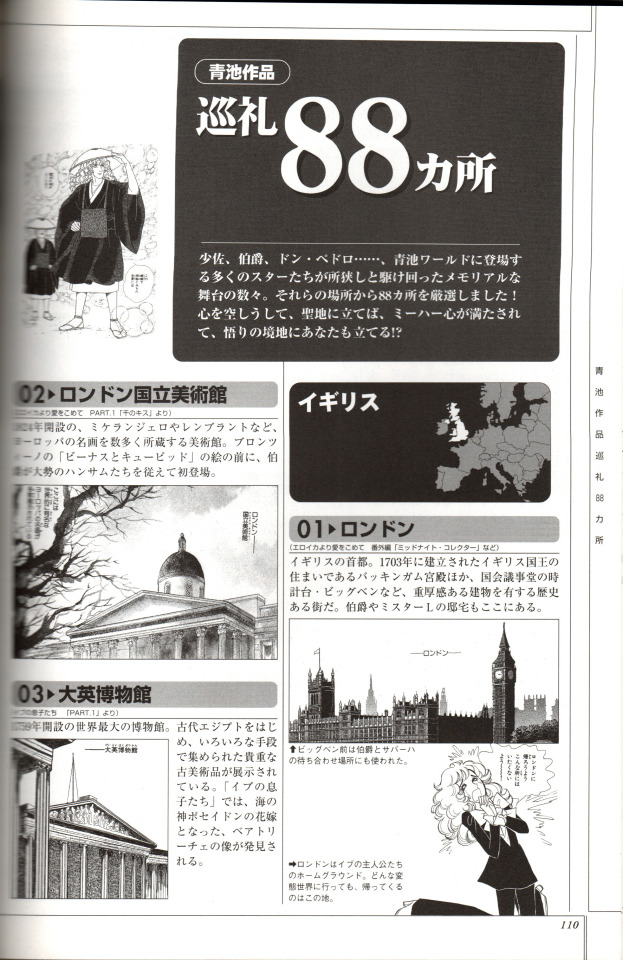


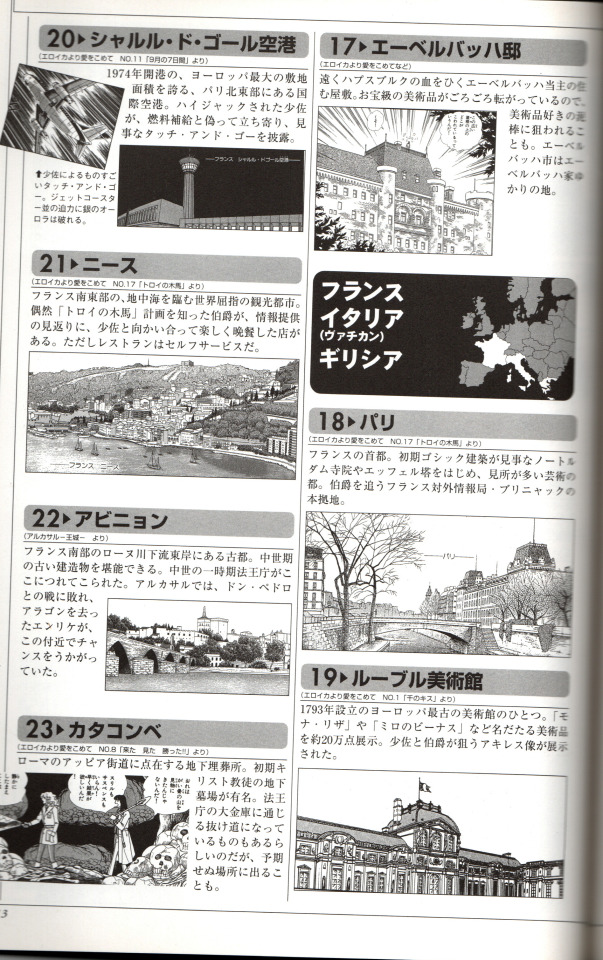
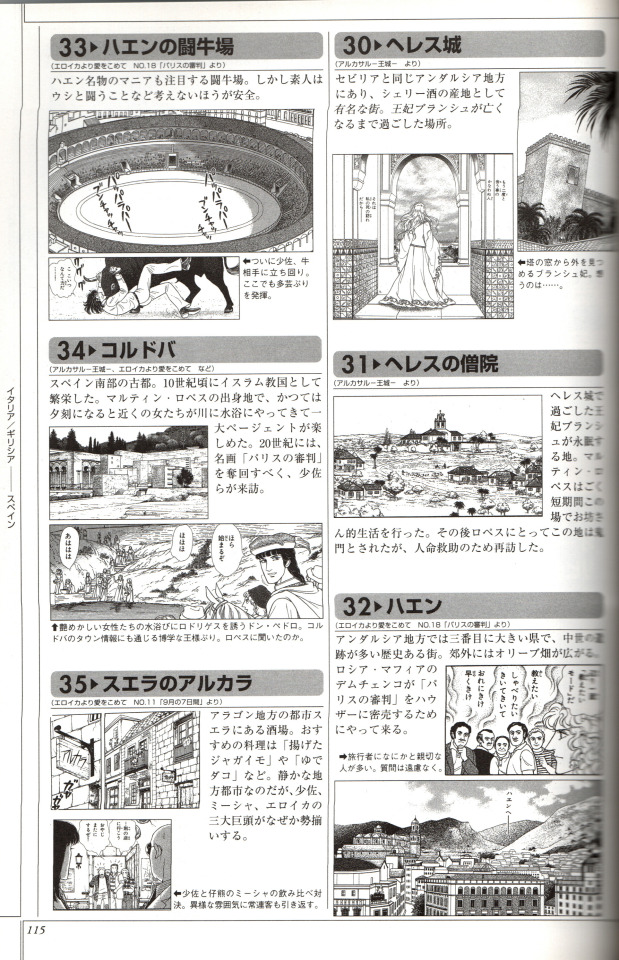
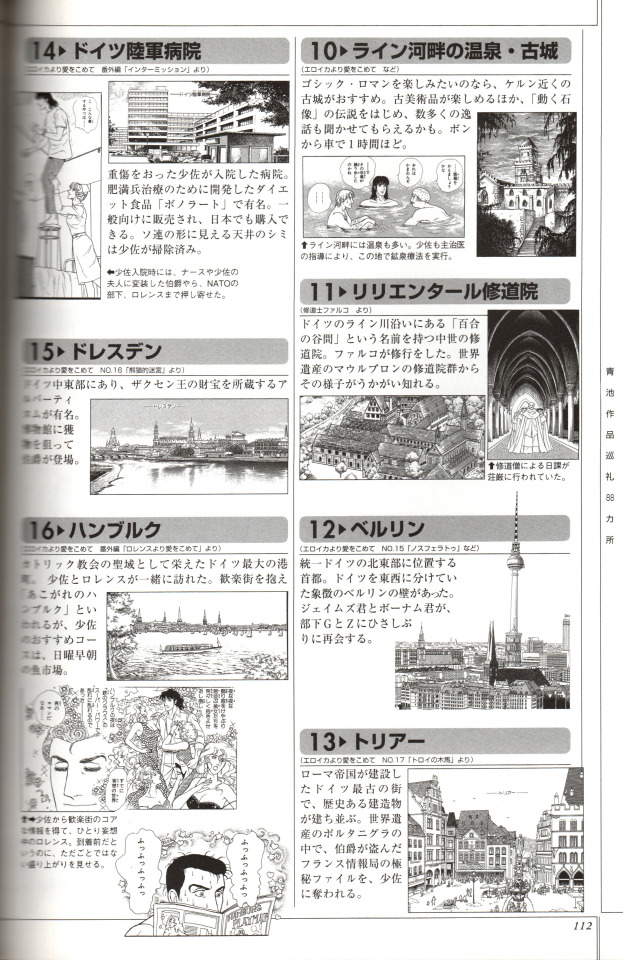
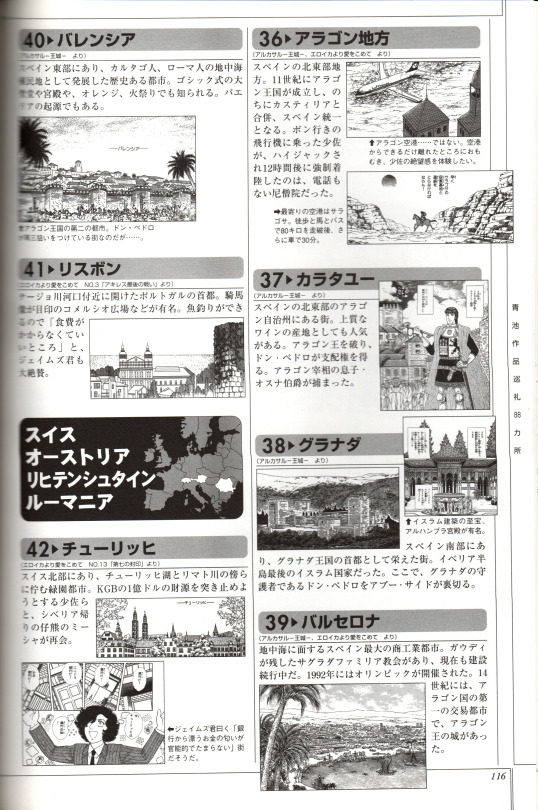


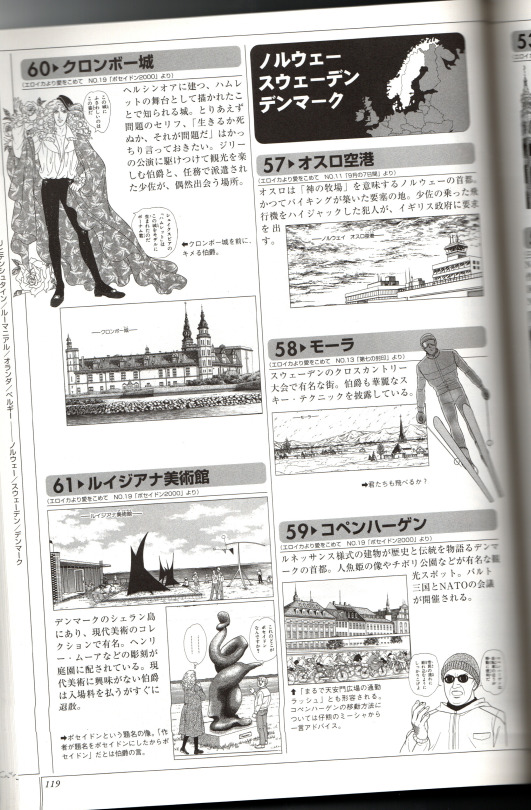
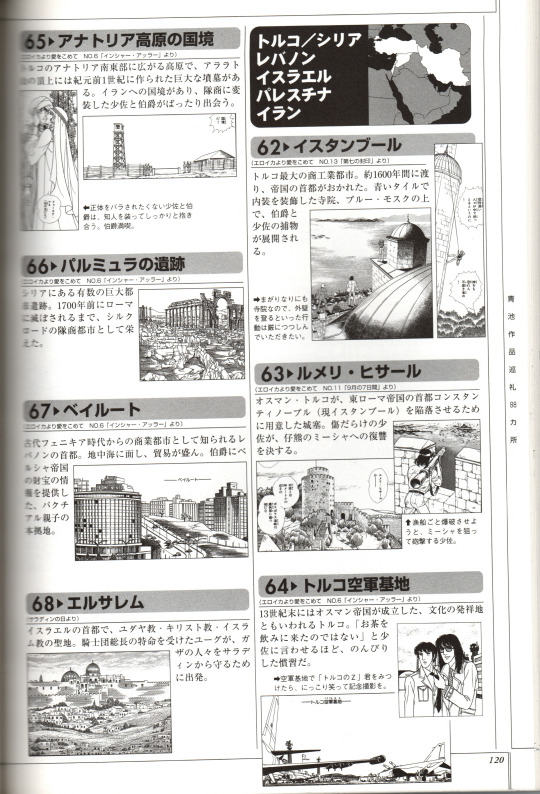
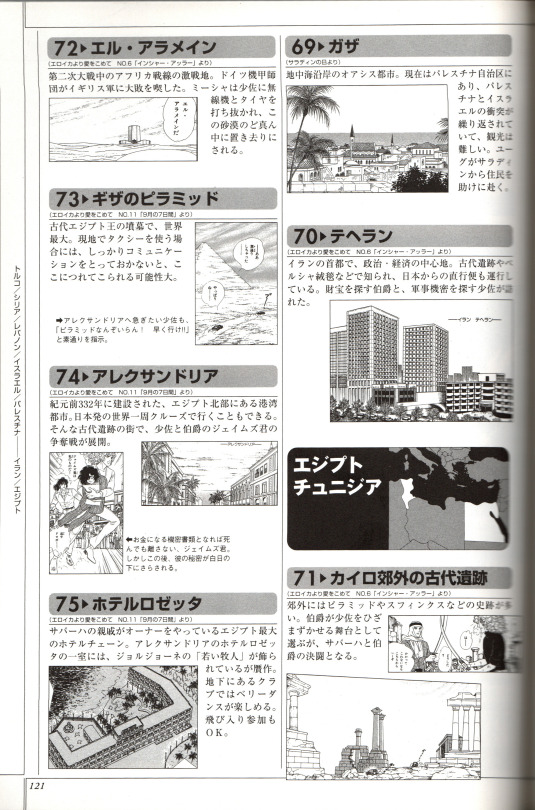


aoike character guide book
places visited in yasuko aoike's works (translation under the cut by the lovely @asnowperson)
ENGLAND 1- London (Midnight Collector side story among others) 2- The National Gallery (London) (Pt.1 A Thousand Kisses) 3- British Museum (London) (Pt.1) 4- Salibury Military Base (Lieutenant Colonel Eberbach side story) 5- Heathrow Airport (No.11 Seven Days in September among others)
GERMANY 6- Plymouth (El halcón) 7- Bonn 8- NATO Bonn Office 9- Cologne 10- Thermal Spas on the Rhine River and the old castles (Eroica, among others) 11- Lilienthal Monastery (Shuudoushi Falco) 12- Berlin (No. 15 Nosferatu, among otheres) 13- Trier (No.17 Trojan Horse) 14- German Military Hospital (Intermission side story) 15- Dresden (No.16 The Panda’s Maze) 16-Hamburg (From Lawrence with Love side story) 17- Eberbach Mansion
FRANCE/ITALY/GREECE 18- Paris (No.17 Trojan Horse) 19- Louvre Museum (No.1 A Thousand Kisses) 20- Charles de Gaulle Airport (No.11 Seven Days in September) 21- Nice (No.17 Trojan Horse) 22- Avignon (Alcazar Oujo) 23- Catacombes (No.8 Veni Vidi Vici) 24- St.Peter’s Basilica (No.8 Veni Vidi Vici) 25- St.Peter’s Square (No.8 Veni Vidi Vici) 26- Parthenon Temple (No.4 Love in Greece)
SPAIN/PORTUGAL 27- Sevilla (Alcazar Oujo) 28- Sigüenza (Alcazar Oujo) 29- Toledo (Alcazar Oujo) 30- Jerez Castle (Alcazar Oujo) 31- Jerez Monastery (Alcazar Oujo) 32- Jaén (No.18 Judgment of Paris) 33- Plaza de Toros de Jaén (No.18 Judgment of Paris) 34- Córdoba (Eroica) 35- Zuera, Alcala (No.11 Seven Days in September) 36- Aragon region (Eroica) 37- Calatayud (Alcazar Oujo) 38- Granada (Alcazar Oujo) 39- Barcelona (Eroica) 40- Valencia (Alcazar Oujo) 41- Lisbon (No.3 Achilles’ Last Stand)
SWITZERLAND/AUSTRIA/LICHTENSTEIN/ROMANIA 42- Zürich (No.13 The Seventh Seal) 43- Luzern (No.12 The Laughing Cardinals) 44- Vienna State Opera (No.14 Emperor Waltz) 45- Vienna Central Cemetery (No.14 Emperor Waltz) 46- Innsbruck (No.14 Emperor Waltz) 47- Innsbruck Airport (No.14 Emperor Waltz) 48- Hofburg Palace (No.14 Emperor Waltz) 49- Tyrol region (No.14 Emperor Waltz) 50- Lichtenstein (No.13 The Seventh Seal) 51- Romania military base (No. 15 Nosferatu)
THE NETHERLANDS/BELGIUM 52- Amsterdam (Eroica, Madan no Shashu) 53- Bruxelles (No.17 Trojan Horse) 54- NATO HQ (No.19 Poseidon 2000) 55- European Commission HQ (No.13 The Seventh Seal) 56- Antwerp (No.17 Trojan Horse)
NORWAY/SWEDEN/DENMARK 57- Oslo Airport (No.11 Seven Days in September) 58- Mora (No.13 The Seventh Seal) 59- Copenhagen (No.19 Poseidon 2000) 60- Kronborg Castle (No.19 Poseidon 2000) 61- Lousiana Museum of Modern Art (No.19 Poseidon 2000)
TURKEY/SYRIA/LEBANON/ISRAEL/PALESTINE/IRAN 62- İstanbul (No.13 The Seventh Seal) 63- Rumeli Hisarı (No.11 Seven Days in September) 64- Turkish air base (No.6 Inshallah) 65- National borders of Anatolian plateau (No.6 Inshallah) 66- Historical remains of Palmyra (No.6 Inshallah) 67- Beirut (No.6 Inshallah) 68- Jerusalam (Saladin no Hi) 69- Gaza (Saladin no Hi) 70- Tehran (No.6 Inshallah)
EGYPT/TUNISIA 71- Ancient remains outside Cairo (No.6 Inshallah) 72- El Alameyn (No.6 Inshallah) 73- Giza Pyramids (No.11 Seven Days in September) 74- Alexandria (No.11 Seven Days in September) 75- Hotel Rosetta (No.11 Seven Days in September) 76- Carthage (No.17 Trojan Horse)
RUSSIA/JAPAN/USA/OTHERS 77- Moscow (No.19 Poseidon 2000) 78- St. Petersburg (No.18 Judgment of Paris) 79- Hermitage Museum (No.18 Judgment of Paris) 80- Siberia (A Tale of Alaska side story) 81- Uspensky Air Base (Eroica) 82- Tokyo Tower (Hiiro no Yuuwaku) 83- Alaska (A Tale of Alaska side story) 84- FBI Fairbanks Office (No.9 The Alaskan Front) 85- Tazlina Lake (No.9 The Alaskan Front) 86- Hawaii (No.9 The Alaskan Front) 87- West of Eden (Eve no Musukotachi) 88- Olympos (Eve no Musukotachi)
#this ones actually in order since everything is numbered#charabook#from eroica with love#sons of eve#el halcon#alcazar#etc etc#yasuko aoike#my scans#mine
24 notes
·
View notes
Text










Mohammad Ehsaei was born in 1939 in Qazvin, Iran and graduated from the Faculty of Fine Arts, University of Tehran. He began his career in the former Lion and Sun youth magazine, then joined as director of a graphic studio with a textbook publishers. He has been an expert adviser in the art books field. He also collaborated with the Pars Art Foundation as painter and calligrapher. Ehsaei is outstanding in the field of typography and aesthetics of Iranian and Islamic lettering. He was instrumental in launching the field of graphics at the Faculty of Fine Arts, University of Tehran.
18 notes
·
View notes
Text
A Year of Animation Day 14: Persepolis
Date: January 14, 2025
Day: 14
Content Watched: Persepolis
Year: 2007
Rating: PG-13
Run Time: 1 hr. 36 mins.
I haven't seen this movie since I was 19. Let's get this show on the road!

I did choose to watch this film in French, mostly because I could. I tend to watch movies with subtitles, even when they're in English, so watching a film in another language isn't much different for me. It did make me wonder if dubbing animation is easier or harder, technically speaking, than dubbing live action. I feel like dubbed animation is less incongruent to watch than dubbed live-action, which I almost never watch because the lip movements don't line up.
Linguistics fact of the day: we do actually get a lot of information from watching the movement of people's mouths, which may interfere with live-action dubbing (I don't know, I haven't done the research). Since animation doesn't have the same precision in mouth mouth movements, there would be fewer visual cues, but also less visual interference. Actually, come to think of it, my older friend who doesn't like animation? I wonder if it's at all related to struggling to hear it.
youtube
In regards to the level of detail and motion in Persepolis, what struck me most about watching it is that almost all of the locations feel busy. There are people and cars and trams moving, so whether it's a city, a grocery store, an airport, or an underground party, it feels like there are people there, like there is a lot happening, even when we're focused on Marjane.

There are only a few scenes that didn't feel this way to me. One is when Marjane is walking through Tehran after she has returned and commenting on how empty it is, and the other is the scene in the airport just before that one.
This movie also has a very unique style of animation. The pictures are relatively simple, and except for the frame story, it is entirely in black and white, which reflects the style in which the graphic novels were drawn. This was a very specific choice by Satrapi who wanted the story to feel universal, rather than as "an Iranian story." I think she did a good job because though I did watch this movie many years ago, I didn't remember where it took place.
I did a little research on the film after watching it. It was hand-drawn, and hand-drawn on paper, as the animators struggled to get the lines they needed using computer programs. Being in black and white also made it difficult because they needed some level of contrast, so they had to figure out how to draw the setting in various shades of grey while keeping the characters in stark and black and white. In short, the animation was very purposeful, it took a lot of time, a lot of attention to detail, and a lot of technical skill to put together, which I personally think should be enough to call it "sophisticated."
Persepolis also varied it's animation in some subtle ways. In many scenes, the characters move more fluidly than the background elements, which give the setting a kind of cut paper feel. I personally liked the look of this because I like cut paper art. Also, sometimes, the animators reversed the contrast, casting characters in silloutte. This was especially common during big historical events, like the mass of people parading through the streets shouting, "down with the shah!" And in the scene where Marji's father explains to her how the shah came into power is done as a puppet show, which I do think was a clever way to despict historic events.

My favorite scene is probably the puberty sequence. I think this would have looked grotesque in live-action, but in animation, it's really funny, and highly relatable. Satrapi talked about wanting this story to feel universal, and this is one way she made that happen.
There are two bits of animation that stick out to me even more than the puberty sequence however. First, there's a scene right at the end of the film in which the police bust a party and are chasing the male partygoers across the rooftops of the city. After several men leap over an alley, one of them is hesitant about jumping, but decides its worth the risk to escape the police. He jumps... and then we see the police looking over the edge of the building.
In another scene earlier in the movie, people are running through a mine field, and one person steps on a mine, disintigrating. Like the march in the streets, both of these are animated in silloutte, which reduces the amount of on-screen violence, but in my opinion, does not detract from the shock and horror of these scenes. In fact, the scene with the landmine makes me think of an Italo Calvino story I read about a men who tries to navigate a minefield and fails. It was shocking in the same way. I read that story like... fifteen years ago, and it's stuck with me, though I can't remember the title. I think it's something really obvious, like "The Minefield," but I can't track it down. If you know what it's called, let me know!
I do think this movie is really good at trading off between more serious moments, like man getting blown up by a landmine or falling off a roof, and more lighthearted scenes, like the puberty sequence or Marji rocking out to a black market Iron Maiden tape. I also notice that it's told kind of in vignettes, almost like Charlie Brown or the Looney Tunes, complete with, in at least one scene, the fade to black acround the main character's face. I don't know if that's due to the way in which the graphic novel was narrated or just an artistic choice.

Tonally, I think the movie nails it as a coming of age story. Lots of kids grow up at times of turmoil and upheaval, but being kids, we're often only vaguely aware of everything that's happening around us. So Marjane and her friends know about the shah and political prisoners, but much of this turns into games for them. When the kids talk about playing at torture, it reminds me of the Them in Good Omens playing at the Spanish Inquisition. In a way, the most real it gets is when they chase Ramine with nails. I really like the followup scene when Marji "forgives" him in a way that shows not only that doesn't have a firm grasp of the events, but that she doesn't understand what it means to apologize or forgive either (It's okay, Marji, many of us don't.)
This is another way Persepolis is a universal story. I think of how my friends and I interacted the world after the attack on the twin towers, or the way the children and teenagers I know view current issues like the COVID-19 pandemic or the election (and re-election) of Donald Trump. It kind of makes me wonder if there are children somewhere playing at being insurrectionists. On a more global note, she also talks about wearing Adidas sneakers and being in love with Bruce Lee. I also have students from different countries, older than her, who love Bruce Lee.
Personally, I find the mother to be the most relatable character. There are countless scenes where she rolls her eyes or makes some other expression at Marjane's behavior that I know I myself have made. But I also love her because she is so supportive of her daughter--her and her husband both. They send her to Austria to keep her safe (again, as an adult with kids in my life, an understandable move), but agree not to ask questions when she wants to return. Her mom even gives her money to buy black market music, even though Marjane rocking out to Iron Maiden is one of the things her mother rolls her eyes at.

Marjane's grandmother is also a really great character and reminds me a lot of Uncle Iroh. She dispenses good wisdom, she re-enforces moral lessons (like when she chastises Marjane for accusing an innocent man of commenting on her body when she needs to escape the police), and she helps Marjane navigate competing identities. Consider the scene where her shadow starts following Marjane after she's told someone she's French. Yes, the shadow represents Marjane's inner voice, but it also represents that she's thinking about what her grandmother would say. She's stuck in this world where she wants to be like everyone else, and in many ways she is--she was a kid who loved Bruce Lee and Adidas sneakers, and now she's an adult who smokes and listens to punk music. Yet, in other ways she's not, and in the next scene, she identifies as Iranian while telling someone off for thinking this difference is so important.

I suspect this conflict is relatable to most people who find themselves part of a minority culture group. I know it comes up a lot in Jewish circles. There is this fine line we have to walk in wanting others to recognize that we're not all that different from them--like watching Netflix and playing Candy Crush and drinking pumpkin spice lattes--and wanting to hold fast to the things that make us unique--like lighting Shabbat candles or studying Torah or wrapping a tichel. But this conflict between the things that make us different versus the things that make us the same are also part of growing up, which is what makes this such a great coming of age story. Of all the relatable themes in the film, this is probably the most universal of all. I am not Iranian. And Marjane is not American. But we both know what it's like to struggle with politics and morality. We both know what it's like to feel othered in some way. We both know what it's like to hope and to love and to grieve. Satrapi says she set out to create a story that anyone could relate to, that could take place anywhere, be about anyone. And I for one, think she did.

Tomorrow, we head out a remote island with Studio Ghibli's only non-Japanese director.
2 notes
·
View notes
Text

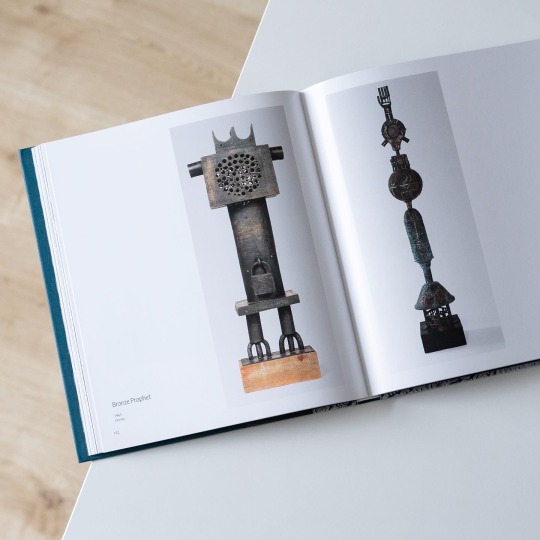
As a constant wanderer between the worlds of East and West Iranian sculptor Parviz Tanavoli (*1937) has developed a multilayered oeuvre that relates as much to history as it does to modernity. Trained both in Iran and Italy, he basically from scratch created modern sculpture in Iran upon returning from Italy in 1959 and shortly thereafter started teaching at Tehran College of Decorative Arts. Here he also became head of the sculpting department, a position he held until 1979 and which was only briefly interrupted by a two-year stay at the Minneapolis College of Art and Design, a brief but important residence as it got him in touch with Pop Art.
For the last two decades Tanavoli has been based in Vancouver and is currently being honored with a retrospective at Vancouver Art Gallery: titled „Poets, Locks, Cages“ the exhibition gathers more than 100 works from all periods of Tanavoli’s career also including prints, paintings and mixed-media assemblages. The exhibition’s title plays at the three major themes in the his work, namely the poet, the locks and the cages with which he creates a connection with pre-Islamic Iranian traditions. The poet e.g. represents his deep identification with poetry and the poet as "annunciator of freedom, peace and love.“ Locks on the other hand are both a pet issue of Tanavoli, who has long been a passionate collector of all kinds of historic locks, but also take on a symbolic role in his art: they codify genitalia, protection, prohibition but also serve as a symbol of healing and hope, just like they did on the grillwork of ancient temples and tombs. And just like the lock the cage in Tanavoli’s work takes on a different meaning that is more about safeguarding than imprisoning and also make for interesting shadow plays.
These insights (and more) a further elaborated in the catalogue accompanying the exhibition which has recently been published by Hirmer: it contains four insightful essays that beyond Tanavoli’s symbology also address the different contexts in which his work came about as well as the important role Abby Weed Grey played for his career in the US. A beautiful way to get to know this pivotal Iranian artist!
24 notes
·
View notes
Text
High School Lit Tournament Side C


Maus: A brutally moving work of art—widely hailed as the greatest graphic novel ever written—Maus recounts the chilling experiences of the author’s father during the Holocaust, with Jews drawn as wide-eyed mice and Nazis as menacing cats. Maus is a haunting tale within a tale, weaving the author’s account of his tortured relationship with his aging father into an astonishing retelling of one of history's most unspeakable tragedies. It is an unforgettable story of survival and a disarming look at the legacy of trauma.
Persepolis: In powerful black-and-white comic strip images, Satrapi tells the story of her life in Tehran from ages six to fourteen, years that saw the overthrow of the Shah’s regime, the triumph of the Islamic Revolution, and the devastating effects of war with Iraq. The intelligent and outspoken only child of committed Marxists and the great-granddaughter of one of Iran’s last emperors, Marjane bears witness to a childhood uniquely entwined with the history of her country. Persepolis paints an unforgettable portrait of daily life in Iran and of the bewildering contradictions between home life and public life. Marjane’s child’s-eye view of dethroned emperors, state-sanctioned whippings, and heroes of the revolution allows us to learn as she does the history of this fascinating country and of her own extraordinary family. Intensely personal, profoundly political, and wholly original, Persepolis is at once a story of growing up and a reminder of the human cost of war and political repression. It shows how we carry on, with laughter and tears, in the face of absurdity. And, finally, it introduces us to an irresistible little girl with whom we cannot help but fall in love.
23 notes
·
View notes
Text
The Stuff I Read in January 2024
bold indicates favourites
Novels
Death's End, Cixin Liu
The Maze Runner/The Scorch Trials/The Death Cure, James Dashner
Echopraxia, Peter Watts
Other Long-Form
Against the Gendered Nightmare, baedan [anarchist library]
Imperialism: The Highest Stage of Capitalism, Lenin
What Is To Be Done, Lenin
Yuri/GL
Ring My Bell, Yeongol
Dallae, Choonae
Now Loading! Mikanuji
Even If It Was Just Once, I Regret It / Ichido Dake Demo, Koukai Shitemasu, Miyako Miyahara
Maka-Maka, Torajirou Kishi
Blooming Sequence, Lee Eul
Love Bullet, inee
Honey Latte Girl, Ayu Inui
I'm Sorry I Know / Wakatte Iru No Ni Gomenna, Ayu Inui
Night and Moon / Yoru to Umi, Goumoto
Handsome Girl and Sheltered Girl / Ikemen Onna to Hakoiri Musume, Mochi au Lait & majoccoid
The Forbidden Peach / Suimitsutou Ha Shoujo Ni Kajirareru, Iroha Amasaki
Goodbye, My Rose Garden, Dr Pepako
Blood Lust, yoshimired [link]
Palestine
The Grim Reality of Israel's Corpse Politics, Jaclynn Ashly [jacobin]
Mohammed El-Kurd and Ahmad Alnaouq on the complicity of mainstream media in Israel’s genocidal attack on Gaza [link]
Inside Israel's torture camp for Gaza detainees, Yuval Abraham [archive]
The Work of the Witness, Sarah Aziza [link]
Who profits from keeping Gaza on the brink of humanitarian catastrophe? Shir Hever [archive]
Misreading Palestine, Max Ajl [link]
A Pediatrician's Two Weeks Inside a Hospital in Gaza, Isaac Chotiner [link]
A Palestinian Meditation in a Time of Annihilation, Fady Joudah [link]
Gender/Sexuality
Assigned Faggot: Gender Roles, Sex, and the Division of Labour, Sophia Burns [link]
Gendered Bodies: The Case of the 'Third Gender' in India, Anuja Agrawal [doi]
Paola Revenioti: The Greek transgender activist on blowing up sexual taboos in the name of art, Hannack Lack [link]
Wages Against Housework, Silvia Federici [pdf]
My Words to Victor Frankenstein above the Village of Chamounix: Performing Transgender Rage, Susan Stryker [pdf]
Race
This is Crap, Hannah Black [link]
Social Constructions, Historical Grounds, Shay-Akil McLean [link]
White Psychodrama, Liam K. Bright [doi]
‘I don’t think you’re going to have any aborigines in your world’: Minecrafting terra nullius, Ligia López López, Lars de Wildt, Nikki Moodie [doi]
Singular Purpose: Calculating the Degree of Ethno-Religious Over-representation in the US No-Fly List, Matteo Garofalo [doi]
Iran
Samad Behrangi's Experiences and Thoughts on Rural Teaching and Learning, M. H. Fereshteh [jstor]
The "Westoxication" of Iran: Depictions and Reactions of Behrangi, al-e Ahmad, and Shariati, Brad Hanson [jstor]
Geographies of Capital and Capital of Geographies: Reckoning the Embodied City of Tehran through Cosmetic Surgeries, Marzieh Kaivanara
Economics
China in Africa: A Critical Assessment, Ahjamu Umi [link]
Small Scale Farmers and Peasants Still Feed the World, Report by ETC Group [link]
16 Million and Counting: The Collateral Damage of Capital [link]
The Keynesian Counterrevolution, Mike Beggs [jacobin]
Jobs For All, Mike Beggs [jacobin]
Other
How This Climate Activist Justifies Political Violence, David Marchese interviewing Andreas Malm [NYT]
Against Domestication, Jacques Camatte [marxists dot org]
The Annihilation of Caste, B. R. Ambedkar, [archive]
#reading prog#ftr i didn't read the original maze runner trilogy because i thought it would be good (it is bad in fact)#but to finally turn the page on an autistic Situation i had like five years ago
15 notes
·
View notes